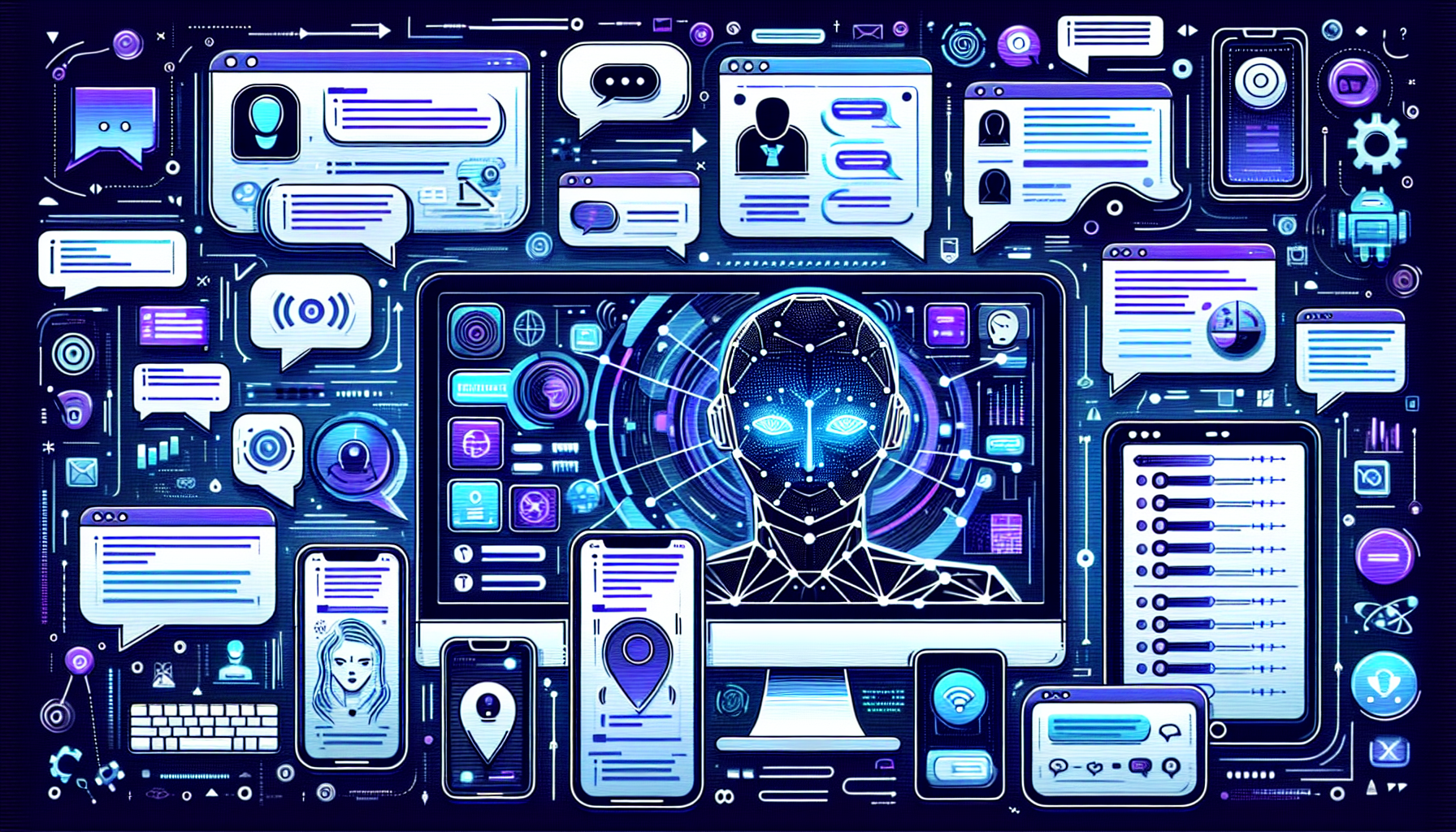What Are Chatbot Widgets and How Can They Transform Your Online Interaction?
Chatbot widgets are compact, interactive software applications designed to simulate a conversation with human users through a website’s interface. These intuitive tools can be embedded on various pages of a website to assist visitors by answering questions, providing recommendations, or guiding them through a service. By employing artificial intelligence and natural language processing, chatbot widgets can interpret and respond to user input in real-time, facilitating a more engaging and personalized online interaction experience.
Enhancing Customer Engagement: The inclusion of chatbot widgets on a website significantly transforms how businesses engage with their audience. These automated assistants are available around the clock, offering immediate responses to customer inquiries without the wait times associated with human-operated support. By consistently providing instant assistance, chatbot widgets not only improve customer satisfaction but also foster a sense of connection between the user and the brand.
Streamlining Operations: Beyond customer service, chatbot widgets can serve as efficient tools for streamlining operations. They can handle a multitude of tasks that would otherwise require human intervention, such as booking appointments, processing orders, or gathering feedback. This aspect of automation allows human resources to be allocated more effectively, focusing on complex issues that necessitate a personal touch while leaving routine queries to the capable hands of chatbot technology.
Moreover, chatbot widgets are continuously evolving, learning from each interaction to deliver more accurate and helpful assistance over time. Their ability to integrate with various databases and CRM systems enables them to provide tailored recommendations and solutions, thereby transforming online interaction from a mere transactional exchange to an immersive, conversational journey. This level of adaptive learning and personalization can dramatically enhance user experience, turning casual website visitors into loyal customers.
Top Benefits of Integrating Chatbot Widgets on Your Site
The landscape of customer service and engagement is rapidly evolving with the integration of artificial intelligence, and chatbot widgets are at the forefront of this revolution. These sophisticated computer programs have become an invaluable asset for business websites, transforming the way brands interact with their customers around the clock. One of the foremost benefits of incorporating chatbots is the provision of instant customer support. Unlike human operators who require breaks and have fixed working hours, chatbots can offer real-time responses 24/7. This translates into immediate assistance for users regardless of time zone or peak hours, significantly enhancing user satisfaction and loyalty.
Another compelling reason to onboard chatbot technology is the personalization capabilities they bring to user interactions. Advanced chatbots are equipped with machine learning algorithms that enable them to remember past interactions and tailor conversations accordingly. This means that each user gets a customized experience that feels more engaging and less like talking to an automated system. Moreover, this level of personalization helps in better understanding your website visitors, allowing you to collect valuable insights into customer preferences and behavior, which can inform future business strategies and marketing efforts.
In today’s digital age, efficient data handling and processing are paramount for any successful online presence. Chatbots excel at consistently collecting and managing data from interactions with users. They can quickly process requests, gather feedback, and even directly facilitate transactions, turning your website into a more effective business tool. The expediency and accuracy of data-handling by chatbots not only streamline operations but also reduce the margin for error that can come with manual data entry and management.
Moreover, integrating chatbot widgets can be a smart financial decision. By automating common inquiries and tasks, chatbots can significantly reduce the workload on human staff, allowing them to focus on more complex and high-value tasks. This can lead to a decrease in operational costs associated with customer support, such as salaries and training expenses. The scalability of chatbot services also means that as your online traffic grows, chatbots can handle the increased load without the need for additional human resources, further solidifying their role as a cost-effective solution for businesses.
Step-by-Step Guide to Installing Chatbot Widgets for Peak Performance
When it comes to enhancing your website’s interactivity and user engagement, incorporating chatbot widgets is a smart move. In this step-by-step guide, we will walk you through the process of installing chatbot widgets on your website to ensure peak performance and a seamless user experience.
Choose the Right Chatbot Platform
First and foremost, selecting the right chatbot platform is crucial for your widget’s performance. Look for platforms that offer customization, easy integration with your existing systems, and real-time analytics. Features such as AI-driven responses and scalability should also be considered. Once you have identified the platform that suits your needs, sign up for an account and create your chatbot using the provided tools and templates.
Customize Your Chatbot’s Appearance and Workflow
After creating your chatbot, it’s time to customize its appearance to match your brand’s aesthetic. Use the platform’s customization options to alter colors, fonts, and avatars. This visual harmony can significantly enhance user trust and engagement. Additionally, tailor your chatbot’s conversational flow to ensure it can handle common user inquiries effectively. Map out possible customer questions and configure the chatbot’s responses for accuracy and helpfulness. This ensures the chatbot will reflect the tone and voice of your brand while providing valuable assistance to users.
Integrate the Chatbot Widget into Your Website
Integration is the final step, and it must be done with precision to avoid any technical setbacks that could impact performance. Typically, the chatbot platform will provide a snippet of JavaScript code that you can insert into the HTML of your website. For peak performance, include the script just before the closing
